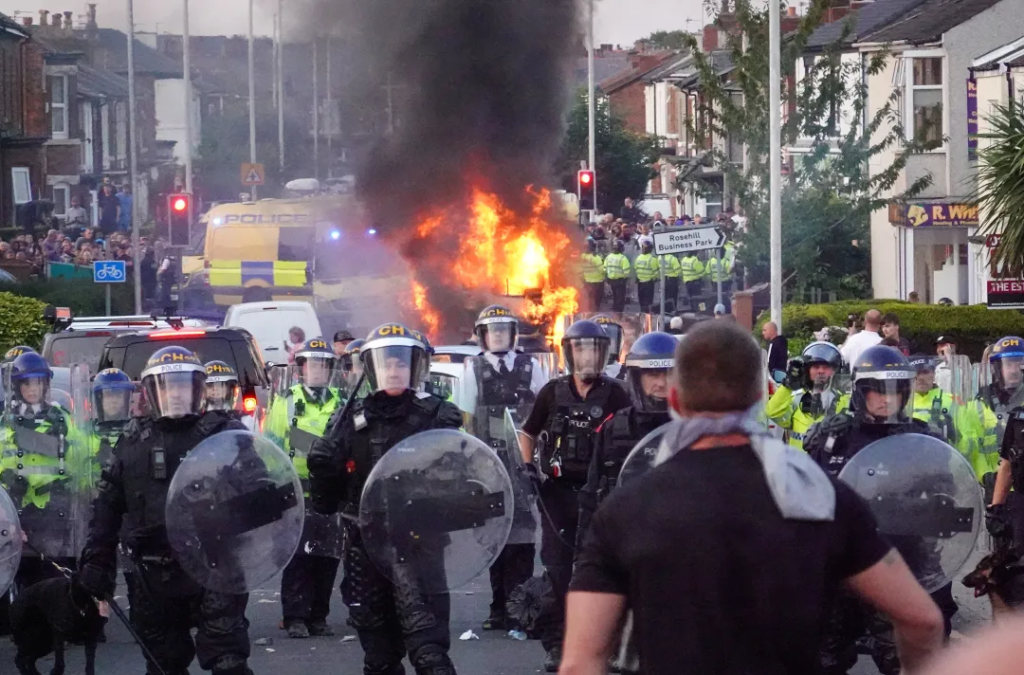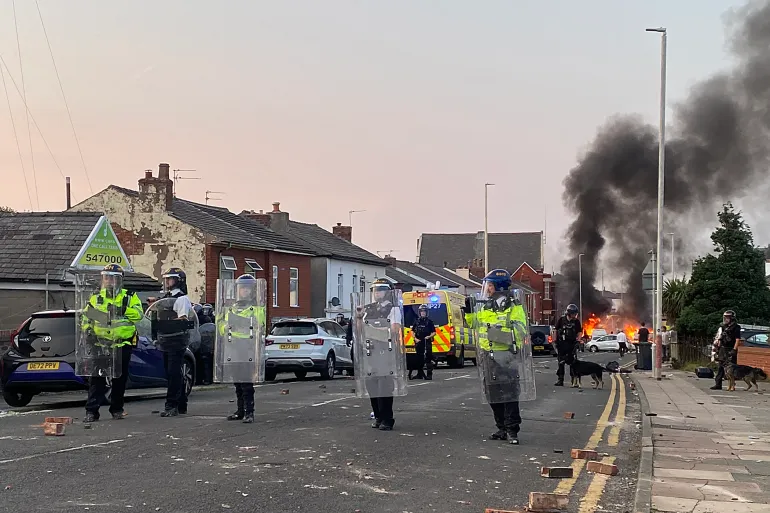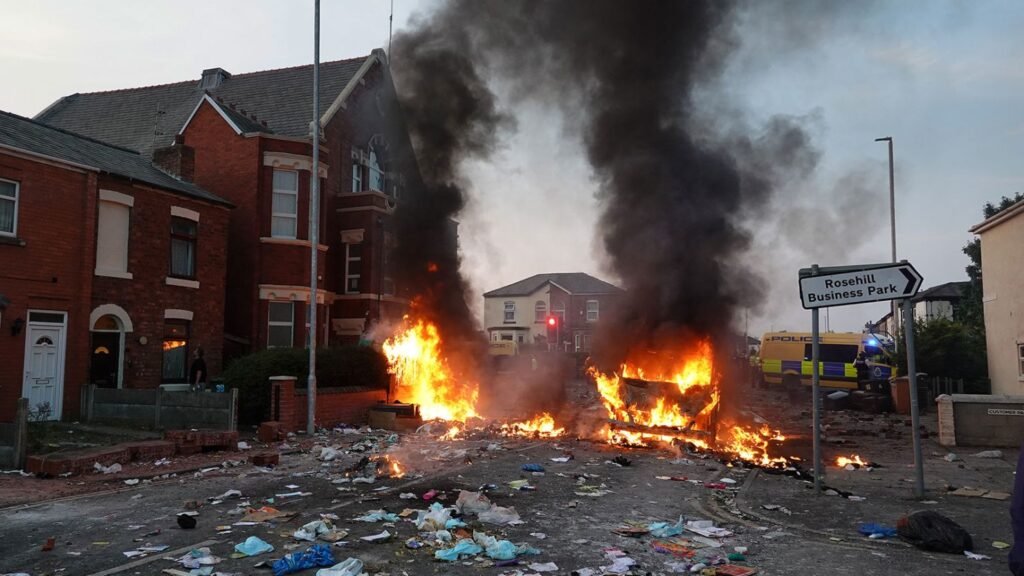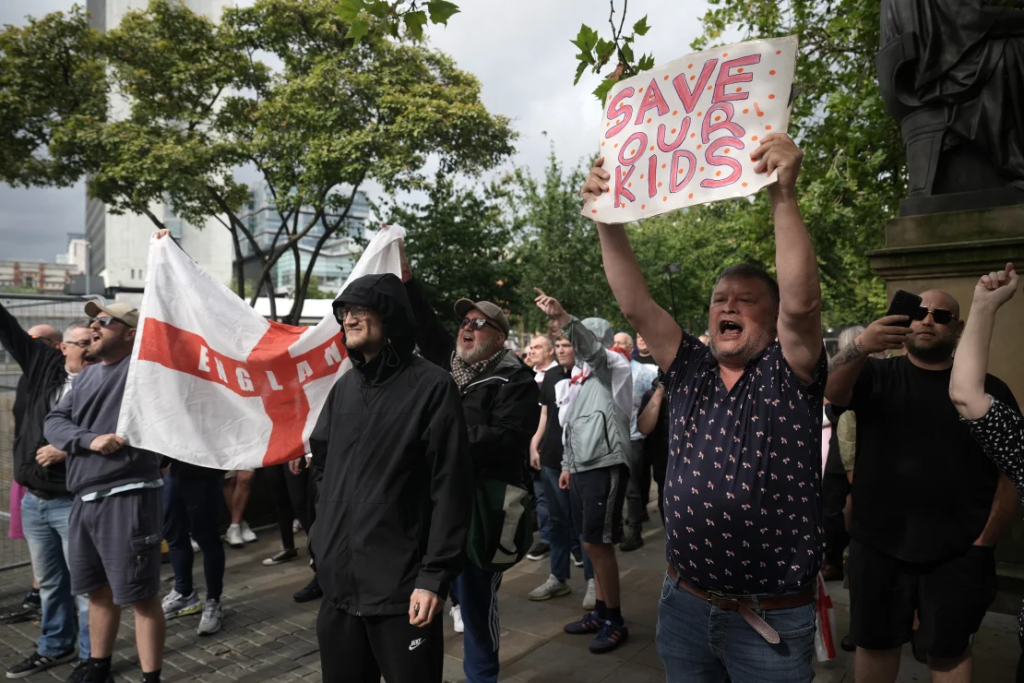Britain’s Far-Right Surge: Mobilizing the Left to Defend Against Rising Xenophobia
Britain is witnessing a disturbing resurgence of far-right activity, as waves of xenophobic riots and violent attacks against migrants and Muslims have erupted across the country. This surge in far-right aggression, sparked by false rumors following a tragic incident in Southport, has put communities on high alert. The situation has grown dire, with fascist groups like the English Defence League (EDL) and Patriotic Alternative (PA) intensifying their efforts, leading rallies aimed at terrorizing immigrant communities and targeting mosques.
As tensions escalate, there’s a growing demand from workers, students, and labor groups for a robust response to this rising menace. The need for a united, organized front against these reactionary forces has never been clearer, especially given the lack of effective intervention from the state and establishment parties. Many now argue that only a mass mobilization of the labor movement and left-wing organizations can push back the tide of hate and defend vulnerable communities.


The Roots of Reaction: Establishment Failures and Economic Despair
The recent events in Southport are not isolated; they are the latest manifestation of a deeper social and economic crisis. Over the past decade, Britain’s working-class communities have been devastated by austerity, unemployment, and cuts to public services. Traditional industrial regions like Merseyside and Teesside, once the heart of British manufacturing, have been reduced to economic wastelands, with limited opportunities for secure employment. As community resources like youth clubs and social centers have vanished, a sense of abandonment has taken root.
This climate of despair has been fertile ground for far-right demagoguery. Reactionary figures exploit legitimate grievances, deflecting blame onto migrants and minorities while avoiding the systemic issues rooted in capitalism’s failures. Mainstream politicians and media have also played a role, with years of anti-immigrant rhetoric from figures like Boris Johnson and Suella Braverman fueling a culture of scapegoating. This rhetoric has fanned the flames, emboldening far-right groups to take their hate to the streets.
A Call to Action for the Left and the Labor Movement
The escalation of racist violence requires a strong and decisive response. The labor movement must go beyond condemnations and take direct action to protect communities. Recent history has shown that relying on the police to manage this threat is ineffective; the police, as a “body of the capitalist state,” often perpetuate biases and fail to protect vulnerable groups from far-right violence. Instead, workers and youth must organize on the streets, following the example of historical mobilizations against fascism, such as the 1936 Battle of Cable Street and the anti-fascist movements of the 1970s.
There is also a pressing need to counter the ideology that drives these groups. Beyond fighting the far-right’s physical presence, the left must dismantle the narratives that enable its growth. This means addressing the root causes of economic despair through a revolutionary program that champions public investment, job creation, and improved social services. By mobilizing around class-based solutions, the labor movement can cut across the far right’s divisive rhetoric and build a united front focused on genuine change.
Building a Revolutionary Path Forward
The rising threat of fascism cannot be defeated by pleas for peace or superficial calls for unity. It requires a revolutionary program that targets the true source of inequality and societal decay: the capitalist system. The left must make it clear that the resources needed to address social needs already exist, but they are hoarded by elites and funneled into defense spending, corporate profits, and imperialist ventures.
To end the cycle of xenophobia, exploitation, and division, the labor movement must rally around an anti-capitalist vision. This includes the nationalization of key industries, public ownership of resources, and investment in housing, healthcare, and education. By linking these demands to the need for structural change, the movement can expose the far-right’s agenda as a diversion from the real issues facing the working class.
Only by advancing a clear, revolutionary path can the left cut through the far-right’s divisive influence, protect communities, and chart a course toward a more just and equitable Britain. The stakes have never been higher, and the left must rise to the challenge with bold, unified action.



